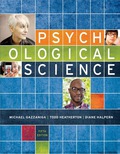
Introduction:
The brains of babies have some specific neural circuits that help in the identification of biological motion, inanimate motion of objects, and identification of faces and their movements.
Answer to Problem 1PT
Correct answer:
One week old infants can differentiate the taste of sweet, have the ability for grasping fingers of caregivers, recognize and orient towards the sound, smell and suck the nipple of mothers for breast milk. Therefore, options (a), (c), (e), (i), and (j) are correct.
Option (a) is given as “differentiate between sweet and nonsweet tastes”.
Option (c) is given as “grasp a caregiver's finger”.
Option (e) is given as “orient toward loud sounds”.
Option (i) is given as “turn his or her head toward the smell of the mother's breast milk.”
Option (j) is given as “turn toward a nipple near his or her mouth”.
Explanation of Solution
Justify reasons for the correct statement:
Newborn babies usually born with developed perceptual skills such as smelling, tasting, hearing, and responding to touch. One week old infant can differentiate among the taste of sweet and nonsweet. Infants have the ability to recognize the sound and they can react to it, hence, they orient towards the loud noise. Newborn infants can hold fingers of mothers or caregivers due to grasping reflex. Also, they able to smell and suck the nipple of their mother for breast milk or similar kind of object near to their mouths due to rooting reflex and sucking reflex.
They gain experience from people and object at the age of six months and their auditory function reaches an adult level. The development of a sense of vision is slower when compared to hearing ability.
Justify reasons for the incorrect statements:
Option (b) is given as “display social smiles”.
First social smiles usually found at 6 months, not at one week. Hence, it is a wrong answer.
Option (d) is given as “make eye contact”.
Visual acuity (ability to distinguish shapes, colors, and patterns) is low for distant objects and it raises over six months. Adult level of visual acuity reaches around one year. Visual practice, development of the cortex and cones in the retina increases the visual acuity with age. Hence, it is a wrong answer.
Option (f) is given as “recognize his or her name”.
One week born baby cannot recognize his or her name. Hence, it is a wrong answer.
Option (g) is given as “roll over from stomach to back”.
One week born baby cannot roll over from the stomach to back. Hence, it is a wrong answer.
Option (h) is given as “see a caregiver across the room”.
Visual acuity (ability to distinguish shapes, colors, and patterns) is low for distant objects and it raises over six months The development of memory aids infants to learn about the world. The long-term memory occurs after 18 months of infants. Hence, it is a wrong answer.
Hence, options (b), (d), (f), (g), and (h) are incorrect.
One week old infants can differentiate tastes, grasp fingers of mothers or caregivers, recognize the sound, smell and suck the nipple of mothers for breast milk.
Want to see more full solutions like this?
Chapter 9 Solutions
EBK PSYCHOLOGICAL SCIENCE (FIFTH EDITIO
- Can excessive use of social media has been linked to increased levels of anxiety, depression, and loneliness, particularly among younger users?arrow_forwardHow exposure to diverse cultures and ideas broadens one's perspective of the world, yet it can also result in cultural appropriation or homogeneity?arrow_forwardHow to develop a proposal outline with examples on How Social Media Influences Human Behavior.arrow_forward
- While reading this article can you explain strong point , weaknesses point an future study https://doi.org/10.1126/science.1182238arrow_forwardWhat are your thoughts of this article https://doi.org/10.1126/science.1182238arrow_forwardWhile readings this article what does this explain about the people https://doi.org/10.1126/science.1182238arrow_forward
- Make a graph based on this data below : based on group A and Group B Group A (Bilingual): Vocabulary Task Response Times (seconds): [1.1, 1.3, 1.2, 1.0, 1.4, 1.3, 1.2, 1.1, 1.0, 1.2] Sentence Construction Task Response Times (seconds): [2.0, 2.1, 1.9, 1.8, 2.2, 2.1, 1.7, 2.0, 1.8, 1.9] Group B (Monolingual): Vocabulary Task Response Times (seconds): [1.5, 1.6, 1.5, 1.4, 1.7, 1.5, 1.8, 1.6, 1.5, 1.6] Sentence Construction Task Response Times (seconds): [2.5, 2.6, 2.5, 2.7, 2.4, 2.6, 2.7, 2.5, 2.5, 2.6] 2. Outcome of the Experiment The outcome showed that bilingual individuals performed better, with faster response times in both vocabulary retrieval and sentence construction tasks compared to monolingual individuals. 3. Descriptive Statistics Group A (Bilingual): Vocabulary Task: Mean: Mean=10(1.1+1.3+1.2+1.0+1.4+1.3+1.2+1.1+1.0+1.2)=1.21s Standard Deviation (SD): SD≈0.11s Sentence Construction Task: Mean: Mean=10(2.0+2.1+1.9+1.8+2.2+2.1+1.7+2.0+1.8+1.9)=1.99s SD:…arrow_forwardIn this article, can you explain each of the three games ultimatum game, the dictator game, and the party punishment game? Also, how many days did they play the game, and did people know about it? https://doi.org/10.1126/science.1182238arrow_forwardIn this article can you describe the fairness an punishment for market, religion and community https://doi.org/10.1126/science.1182238arrow_forward
- In this article what was the advantage an disadvantage of this article and what was the point of the article. https://doi.org/10.1126/science.1182238arrow_forwardIn this article what was the method and what was the results https://doi.org/10.1126/science.1182238arrow_forwardCan you help me find 10 interested discussion topics on evolutionary psychology &culturearrow_forward
 Ciccarelli: Psychology_5 (5th Edition)PsychologyISBN:9780134477961Author:Saundra K. Ciccarelli, J. Noland WhitePublisher:PEARSON
Ciccarelli: Psychology_5 (5th Edition)PsychologyISBN:9780134477961Author:Saundra K. Ciccarelli, J. Noland WhitePublisher:PEARSON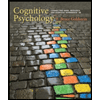 Cognitive PsychologyPsychologyISBN:9781337408271Author:Goldstein, E. Bruce.Publisher:Cengage Learning,
Cognitive PsychologyPsychologyISBN:9781337408271Author:Goldstein, E. Bruce.Publisher:Cengage Learning, Introduction to Psychology: Gateways to Mind and ...PsychologyISBN:9781337565691Author:Dennis Coon, John O. Mitterer, Tanya S. MartiniPublisher:Cengage Learning
Introduction to Psychology: Gateways to Mind and ...PsychologyISBN:9781337565691Author:Dennis Coon, John O. Mitterer, Tanya S. MartiniPublisher:Cengage Learning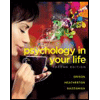 Psychology in Your Life (Second Edition)PsychologyISBN:9780393265156Author:Sarah Grison, Michael GazzanigaPublisher:W. W. Norton & Company
Psychology in Your Life (Second Edition)PsychologyISBN:9780393265156Author:Sarah Grison, Michael GazzanigaPublisher:W. W. Norton & Company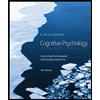 Cognitive Psychology: Connecting Mind, Research a...PsychologyISBN:9781285763880Author:E. Bruce GoldsteinPublisher:Cengage Learning
Cognitive Psychology: Connecting Mind, Research a...PsychologyISBN:9781285763880Author:E. Bruce GoldsteinPublisher:Cengage Learning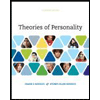 Theories of Personality (MindTap Course List)PsychologyISBN:9781305652958Author:Duane P. Schultz, Sydney Ellen SchultzPublisher:Cengage Learning
Theories of Personality (MindTap Course List)PsychologyISBN:9781305652958Author:Duane P. Schultz, Sydney Ellen SchultzPublisher:Cengage Learning





